This post contains affiliate links. When you buy through our links, we may earn a commission.
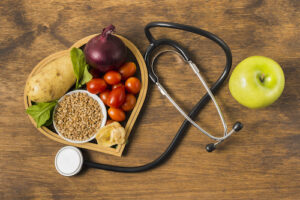 What Cooking Methods Preserve the Most Nutrients? The vitamins and minerals in our food are important for our overall health and well-being. While some cooking methods can destroy nutrients, others can help preserve them.
What Cooking Methods Preserve the Most Nutrients? The vitamins and minerals in our food are important for our overall health and well-being. While some cooking methods can destroy nutrients, others can help preserve them.
So preserving nutrients is key to getting the most out of the foods we eat.
The nutrients in our food come from a variety of sources.
Some are naturally present in the food, while others are added during processing or cooking. Nutrients can be lost through cooking if they’re not properly handled or used in the wrong cooking method.
In this article, we’ll look at some of the most common cooking methods and how they impact nutrient content. We’ll provide some tips on how to preserve nutrients when cooking.
Before we dive in, let’s briefly review some of the most important nutrients found in food.
What are nutrients?
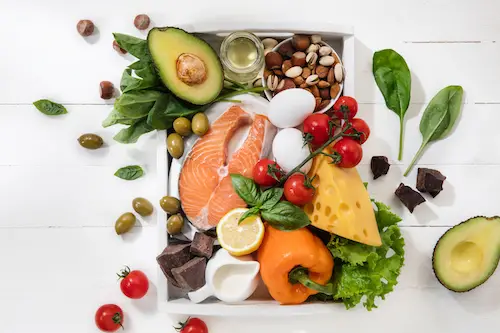
Nutrients are substances that provide the body with energy and support growth, development, and repair. There are six main nutrients: carbohydrates, fats, proteins, vitamins, minerals, and water.
Carbohydrates: Carbohydrates are the body’s main source of energy. They’re found in bread, rice, pasta, cereal, sweet potatoes and fruits. These are broken down into glucose and then used by the body for energy.
Fats: Fats are a nutrient that helps the body absorb vitamins and minerals. They’re also a source of energy. Fats are often found in oily fish, nuts, seeds, and avocados.
Proteins: Proteins are essential for the growth and repair of the body’s tissues. They’re found in meat, poultry, fish, beans, lentils, tofu, eggs, and dairy products.
Vitamins: Vitamins are nutrients a human body needs in small amounts to function properly. They’re found in fruits, vegetables, green beans, fiber in potatoes, whole grains, and fortified foods.
Minerals: Minerals are nutrients that the body needs to develop and function properly. They’re found in meats, poultry, fish, dairy products, nuts, and seeds.
Water: Water is essential for the body to function properly. It helps to transport nutrients and waste products, and it helps to regulate body temperature.
We’ve reviewed some of the most important nutrients, and now let’s look at how cooking methods can impact their content.
10 Cooking Methods to Preserve Nutrients:
You might think that the longer you cook your food, the more nutrients you lose. But that’s not always the case. Some cooking methods can help preserve nutrients.
Here are the 10 best ways to cook your food while preserving nutrients:
1. Steaming:
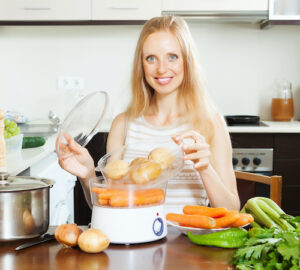
Steaming is a gentle cooking method that doesn’t require any fat or oil. This makes it ideal for delicate foods like fish and vegetables. Plus, steaming helps retain more vitamins and minerals than other cooking methods.
You can steam food in a variety of ways. You can use a steamer basket, an electric steamer, or even just a pot of boiling water.
Just ensure not to overcook your food, as this can cause fat-soluble nutrients to leak. When in doubt, steam for shorter periods at a lower temperature.
For extra flavor, add herbs or spices to your steamer. Or, try steaming your food over a broth or stock. You can also add vegetables to the water to infuse them with flavor.
2. Sous Vide:
Sous vide is another popular method of cooking that involves sealing food in a vacuum-sealed bag and cooking it in warm water. This low-and-slow cooking method is great for avoiding loss of nutrients.
Sous vide can help preserve nutrients to better than other methods like boiling or steaming.

In this method, food is cooked evenly and slowly. This prevents nutrients from leaching out into the cooking water making it great for human health. Plus, the vacuum-sealed bag helps to retain moisture.
As a result, sous vide can help your food retain more vitamins, minerals, and antioxidants.
To sous vide food, you’ll need a special appliance known as a sous vide cooker. These cookers are available online and in some kitchen stores. Alternatively, you can use a regular pot or slow cooker filled with warm water.
3. Raw Food:

Raw food is, as the name suggests, food that is not cooked. This includes fruits, vegetables, nuts, seeds, and meats.
Raw food is a great way to preserve nutrients. That’s because cooking can cause nutrients to leach out into the cooking water or air. Plus, heat can damage delicate nutrients like vitamins C and B.
As a result, eating raw fruits and vegetables can help you get more vitamins, minerals, and antioxidants.
While cooking can destroy some nutrients, it can make other nutrients more bioavailable. Which means your body can absorb the nutrients more easily.
So, while raw food might have more nutrients overall, cooked food might have more nutrients that your body can use.
A way to get the most vitamins from your food is to eat a variety of both cooked and raw foods. That way, you’ll get the health benefits of both.
4. Microwaving:

Microwaving is often thought of as an unhealthy cooking method. But, when it comes to preserving nutrients, microwaving is one of the best methods. Microwaving can help preserve maximum nutrients.
This is because microwaving cooks food quickly and evenly. As a result, there’s less time for nutrients to leach out. Plus, the shorter cooking time means that vitamins and minerals are less likely to be damaged by heat.
Microwaving is so effective at preserving nutrients that it’s often used in scientific studies.
Just be sure not to overcook your food in the microwave cooking. Overcooking can cause nutrients to break down and leach out.
5. Stir-Frying:
Stir-frying is a quick and easy way to cook food. Plus, it’s a great way to preserve nutrients. That’s because stir-frying cooks food quickly at a high temperature. When stir-frying, it’s important to use a small amount of oil.
This helps to prevent nutrients from leaching out into the oil.
Plus, it helps to keep the food from sticking to the pan. Additionally, stir-frying helps food retain its color, texture, and flavor.
It’s also a wonderful way to cook a large amount of food. Stir-frying is a great way for cooking vegetables and meats. It’s also another great way to create healthy, balanced meals.
To stir-fry, you’ll need a large skillet or wok. Heat the frying pan over high heat and add a small amount of oil. Then, add your food to the pan and cook it for a few minutes, stirring frequently.
6. Pressure Cooking:
Pressure cooking is a common cooking process that uses steam to cook food. This method is great for preserving nutrients because it cooks food quickly. Pressure cooking can reduce cooking time by up to 70%.
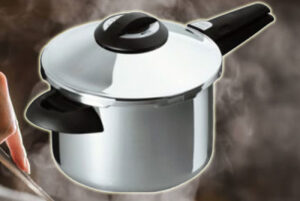
Additionally, you can preserve nutrients in your food by using the pressure cooking method. This is because the steam helps to cook food evenly. Plus, it doesn’t allow nutrients to leach out due to contact with water.
To pressure cook food, you’ll need a pressure cooker. Pressure cookers come in both stovetop and electric models. Alternatively, you can use a regular pot with a lid that seals tightly.
To pressure cook food, add it to the pot or cooker. Then, add water or broth until the food is covered.
Seal the lid tightly and bring the mixture to a boil. Reduce the heat and let the mixture simmer for the time specified by your recipe.
7. Baking or Roasting:
Baking and roasting are similar cooking methods. They both involve cooking food in an oven at a high temperature. However, baking is typically done with sweets like cakes and cookies.
Roasting is typically done with savory foods like meats and vegetables.

Both baking and roasting are great ways to preserve nutritional quality. That’s because they cook food quickly at a high temperature. Additionally, baking and roasting help foods retain their color, texture, and flavor.
To bake or roast food, preheat your oven to the temperature specified by your recipe. Then, add your food to a baking dish or roasting pan. Bake or roast the food for the time specified by your recipe.
8. Broiling:

Broiling is a form of cooking to cook food under direct heat. This makes it similar to grilling. However, with broiling, the heat source is above the food instead of below it.
Broiling is a great way to preserve nutritional content because it cooks food quickly at a high temperature. This helps to preserve more vitamins and minerals than other methods like boiling or steaming.
Additionally, broiling helps foods retain their color, texture, and flavor.
To broil food, preheat your oven to the temperature specified by your recipe. Then, place your food on a baking sheet and put it under the broiler. Broil the food for the time specified by your recipe.
9. Sautéing:
Sautéing is another cooking method that involves cooking food in a small amount of oil over high heat. This makes it similar to frying. However, with sautéing, less cooking liquid is used, and the food is not cooked for as long.
For most people, sautéing is a healthier option than frying. That’s because it uses less oil and cooks food more quickly. The minerals and vitamins content of food
are also less likely to be damaged by the high heat of sautéing. Some of the nutrients that are preserved include vitamins A and E, as well as carotenoids.
You can also avoid loss of vitamin C content by Sautéing.
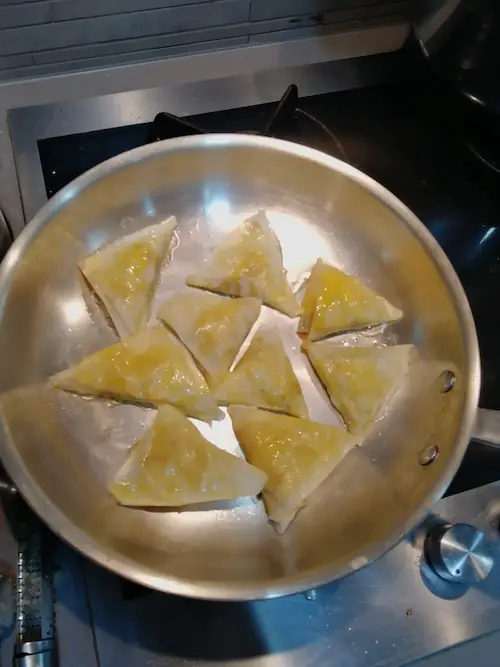
Sautéing is another great way to preserve the flavor and texture of food. To sauté food, heat oil in a pan over high heat. Then, add your food to the pan and cook it for the time specified by your recipe.
10. Grilling:
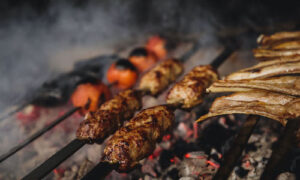
Grilling is a popular cooking method to cook food over direct heat. This makes it similar to broiling.
However, with grilling, the heat source is below the food instead of above it. This cooking method is typically done outdoors on a grill.
Grilling is a healthy cooking method because it doesn’t require the use of any extra fats or oils. Additionally, the high heat of grilling helps to seal in the juices of meats and vegetables, which helps to preserve their antioxidant capacity.
When grilling meats, it’s important not to overcook them. Overcooking can cause the formation of harmful compounds that can increase the risk of cancer. Additionally, overcooking can make meats tough and dry.
A way to avoid overcooking is to use a meat thermometer for cooking meats to the recommended internal temperature.
You can also cook the fresh Vegetables on the grill. Many people enjoy grilled vegetables because of the smoky flavor that the grill imparts.
What Cooking Methods Preserve the Most Nutrients : 5 Personal Tips
- For the best results, choose a cooking method that suits the food you’re cooking.
-
- Meats and fish are best cooked using dry heat methods, like grilling, broiling, baking, and roasting.
- Green Vegetables are best cooked using moist heat methods like boiling and steaming.
- Cook food quickly at a high temperature to avoid the nutrient Loss.
-
- Cooking food for a longer period of time or at a lower temperature will cause more nutrients to be lost.
- Use the shortest cooking time possible and cook food at the highest temperature that is safe for the particular food.
- Don’t overcook food.
-
- Overcooking can cause the formation of harmful compounds and make food tough and dry.
- Use a meat thermometer for cooking meats to the recommended internal temperature.
- For vegetables, cook them until they are tender but still crisp.
- Avoid using too much water when cooking.
-
- Water can leach healthy nutrients out of food.
- If you need to use water, cook food in a small amount of water for the shortest period of time possible.
- For quality of vegetables, you can also cook them in their juices.
- Use fresh ingredients whenever possible.
-
- Fresh ingredients will have more nutrients than those that are processed or frozen.
- If you can’t find fresh ingredients, choose frozen over-processed.
Frequently Asked Questions:
Which cooking method preserves the most nutrients in vegetables?
The cooking method that preserves the most nutrients in vegetables is steaming. This is because the vegetables are only cooked in a minimal water for a short period of time.
What cooking method ensures maximum nutrient retention?
The best way to preserve nutrients is to cook food quickly at a high temperature using the shortest cooking time possible. Pressure cooking, steaming, and microwaving are all methods that meet these criteria.
Do roasted vegetables retain their nutrients?
Roasting vegetables is a healthy cooking method because it doesn’t require the use of any extra fats or cooking oils. Additionally, the high heat of roasting helps to seal in the juices of vegetables, which helps to preserve their nutrients.
Conclusion:
So, what cooking methods preserve the most nutrients? It depends on the food and the nutrient.
For example, boiling vegetables retain more water-soluble nutrients than other methods, while grilling preserves more fat-soluble vitamins.
As for minerals, they are generally not affected by cooking methods. The best way to preserve nutrients is to cook food lightly and for a short time.
So there you have it! Now you know which cooking methods preserve the most nutrients. So the next time you plan a meal, keep this in mind to ensure your food is as healthy as possible.
